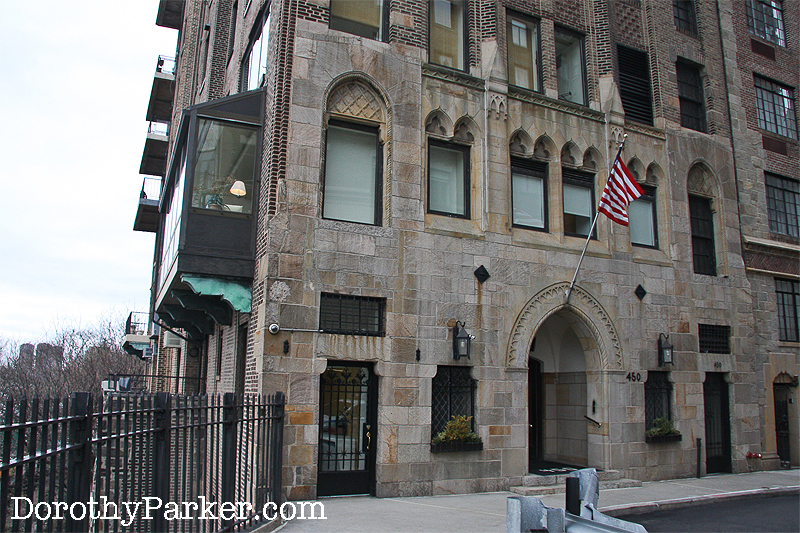
Alexander Woollcott — Dorothy Parker’s close friend and fellow member of the Algonquin Round Table — was literally larger than life. Harpo Marx described him as something that got loose from the Macy’s Thanksgiving Day Parade. Aleck Woollcott had a charismatic personality that drew people to him.
He was a theater and literary critic of the highest order from the 1920s to the early 1940s, and was at the time one of the most famous people in the nation. He was also a windbag and a social dervish, so of course he was in Mrs. Parker’s pack of chums.
Woollcott was among the first people at the first meeting of the Round Table, in 1919, when he returned from World War I. A group of theater agents tossed the luncheon for him, as he was the New York Times drama critic. Parker and Robert Benchley attended the lunch.

Franklin P. Adams, the newspaper columnist, suggested he name the place after the Indian word Ocowoica, meaning The-Little-Apartment -on-the-East-River-That- It-Is-Difficult-to-Find-a-Taxi-cab-Near. But Dottie came up the name that stuck: Wit’s End.
The third-floor apartment had a commanding view of the East River, and overlooked a small garden below the building. The apartment became famous in the city’s social circles. Sunday breakfasts were the highlight, which Woollcott served in his pajamas. Greta Garbo also resided here.
He was the host of The Town Crier on CBS Radio, and Parker was a sometimes guest, who would drop by to read some of her work. She also appeared with Harpo Marx on the show. In 1934, she and Alan Campbell took an apartment across the street from Wit’s End.
Parker and Woollcott’s lives were intertwined. The pair was at the Round Table for 10 years, and their friends were very close to each other. Dottie lived in the same apartment as painter Neysa McMein, who Woollcott fancied and wrote a tribute to.
Woollcott also wrote the single-most important biographical and critical assessment of Parker between 1916 and 1934. He wrote the famous evaluation of the conflicts that one finds in Dottie, in his 1934 book While Rome Burns:
The outward social manner of Dorothy Parker is one calculated to confuse the unwary and unnerve even those most addicted to the incomparable boon of her company. You see, she is so odd a blend of Little Nell and Lady Macbeth. It is not so much the familiar phenomenon of a hand of steel in a velvet glove as a lacy sleeve with a bottle of vitriol concealed in its folds.
After Parker moved to Los Angeles in 1934, she would listen to Woollcott’s CBS radio show broadcast from New York. It made her cry. One of the letters that Mrs. Parker wrote to her friend from Pipersville during World II was collected in The Greatest Letters of the 20th Century.
The Wit’s End apartment is in a quiet, almost sleepy, part of the East Side and very nice to visit. There is a wonderful view of the river, and quite lovely to see in the evening.
